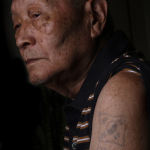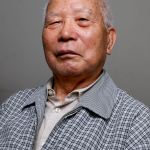The forgotten war: meeting former North Korean prisoners
Tae-Gyun Kim, the 2016 recipient of the Ross Hazeltine Travel Scholarship, traveled through Brazil and Argentina to take portraits of former North Korean prisoners of the Korean War.
Kim met and interviewed the former prisoners before photographing them.
Kim’s words about the project:
For about 3 months, I traveled through Brazil and Argentina to meet “76 prisoners.” They were former North Korean prisoners of the Korean War. They were captured by the U.S. or the South Korean Army during the war and sent to prison camp until the war ceased in 1953. More than 150,000 North Korean soldiers were located in different areas of South Korea, but the biggest camp was at Geoje-do, small island off the south coast of the peninsula. There, prisoners divided themselves into two groups: Chin-gong (Pro-communism) and Ban-gong (Anti-communism). Each compound was controlled by one group or the other and often the opposite group staged a coup d`etat to gain control back. The prison camps were under the guard of the United Nation forces which were the U.S. and the South Korean Army, but they only watched prisoners during the daytime. After 6pm, there was killing between the two sides.
After the war, more than 50% of former North Korean prisoners refused to be sent back to their own home. Within this group, 76 prisoners refused both sides, but chose to go to a neutral nation: India. Following a few years in India, in 1956, 50 of them moved to Brazil and 12 of them moved to Argentina.
To me, they were interesting subjects to meet. The Korean War is often called the “forgotten war” although it was one the bloodiest wars in the 20th century. It was a unique war that represents how Cold War ideology determined soldiers’ lives. They had to abandon their homes and kill each other even in prison camps. After the war, massive number of prisoners refused to be sent back to their own home. Without any family or cultural background, young 62 males chose to move to different countries. I wanted to find out why they abandoned their own home, chose to move to completely unknown places that did not have any connection to them, and how they assimilated into these new cultures. They are “forgotten prisoners” in a “forgotten war.” I met 7 prisoners. Many of the others have passed away. I traveled to Cuiaba, Florianopolis, Sao Paulo, and Buenos Aires to meet them. I had a formal interviewing session, set up a portable lighting set, took portraits, and documented their daily lives with my camera as a photojournalist.
Most of them married Japanese or Brazilian women, and a few married Korean women. They have become pastors, successful businessmen, and farmers but some of them have been disappeared and died homeless on the street.
Luckily, the survivors and their family gather every February to celebrate their arrival in Brazil. I was also able to document the event. Since I myself am Korean, the Korean War has always been an interesting topic to me, although it is less often studied. It was a great opportunity to meet and see these former prisoners who escaped from slaughter, killing, and ideological conflict to find their new home. Thanks to IU and the Ross Hazeltine Scholarship program for giving me this opportunity.








